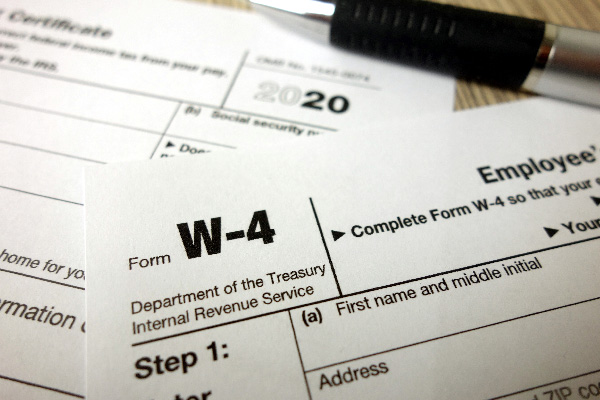From Forbes.com –
Do you enjoy working with withholding allowances to figure out an employee’s federal income tax withholding? Tough luck if you do. Now, there’s a 2020 W-4 form that completely revamps income tax withholding.
It’s time to unfurl the pomp and circumstance for the arrival of the new W-4 for 2020.
What The 2020 W-4 Form Means For Your Business
The IRS has completely changed up income tax withholding with the release of the new W-4 for 2020.
That means there are a lot of employers who are stressed out about the 2020 W-4 changes.
If you handle payroll by hand, it may seem intimidating to have to change up your payroll process. You will likely have a lot of questions. You might be confused about what it all means. That’s why I’ve written this list of six things to keep in mind during this hectic transition time.
1. You May Have Different Versions Of Form W-4 On File
Not all employees have to fill out the 2020 W-4 form.
Only employees whose first paycheck is in 2020 need to use the newly designed form. Your current employees who don’t want to change anything on their form don’t need to fill out the new version. But if these employees do want to change something on their pre-2020 Form W-4, they will need to fill out the new 2020 version.
So, you’ll probably have a few different versions of the form on file.
If having different versions on file bothers you, you can ask employees you hired before 2020 to submit the new form. But, you can’t force them to or imply that it’s mandatory.
2. Withholding Allowances Are Gone
The thing that really separates the 2020 W-4 form from the 2019 and earlier forms is the elimination of withholding allowances.
The repeal of withholding allowances came as a shock to many employers and employees alike. Employers have used withholding allowances to determine income tax withholding for years.
In case you’re unfamiliar with withholding allowances, here’s a brief recap: withholding allowances are exemptions from federal income tax. The more allowances an employee claims, the less you withhold from their wages for federal income tax.
Instead of claiming withholding allowances to reduce federal income tax withholding, employees can now claim dependents or other deductions on the form. But to do this, they have to do a little bit of math, which I’ll talk about in the next section.
3. The Layout Looks Much Different
There’s bound to be some significant layout changes when something is revamped, and the new form does not disappoint. It’s now divided into five steps and takes up an entire page.
The five steps on the new W-4 for 2020 are:
- Enter Personal Information
- Multiple Jobs or Spouse Works
- Claim Dependents
- Other Adjustments (optional)
- Sign Here
Previously, the employee would enter their personal information, claim allowances, and sign. They could also request an additional amount they wanted withheld or claim exemption from federal income tax withholding if these situations applied.
But now, the employee must do a little more legwork—in the form of math, that is. If they want to reduce their withholding, they must claim dependents by multiplying the number of children by $2,000 and/or other dependents by $500.
You might think of the new W-4 form as a mini income tax return. The revamped form is meant to improve withholding accuracy.
Make sure to look over the new form on the IRS’s website before asking your new employees to fill it out. That way, you aren’t caught off guard by all of the changes (and can answer employee questions).
4. There Are New Tax Withholding Tables
And of course, what good is the 2020 W-4 form if you still have income tax tables that require withholding allowances?
Not very good, obviously … which is why the IRS updated their income tax withholding tables. The 2020 tables complement the new W-4 form in that they don’t have withholding allowances anymore.
There are two tables that go with the new W-4 form:
- Percentage Method Tables for Automated Payroll Systems
- Wage Bracket Method Tables for Manual Payroll Systems
If you handle payroll manually, use the wage bracket method tables. These tables have two rates for each filing status: “Standard withholding” and “Form W-4, Step 2, Checkbox withholding.”
But before you can use the tables, you have to find the employee’s adjusted wage amount. And after you find the rate on the table, your work isn’t done—it’s just a tentative rate. You need to then account for any tax credits claimed and/or additional tax withholding requested on Form W-4.
To help you through these steps, the IRS provides a withholding worksheet in Publication 15-T, Federal Income Tax Withholding Methods.
…
Continue Reading at Forbes.com
…
If you have questions about the new 1040, contact the friendly professionals at the CPA Advisory Group. Call us at (614) 942-1990, drop an email to [email protected], or just fill out the contact form on this site at cpaagi.com/contact.
CPA Advisory Group, Inc.
Leading Small Businesses and Individuals to Success






